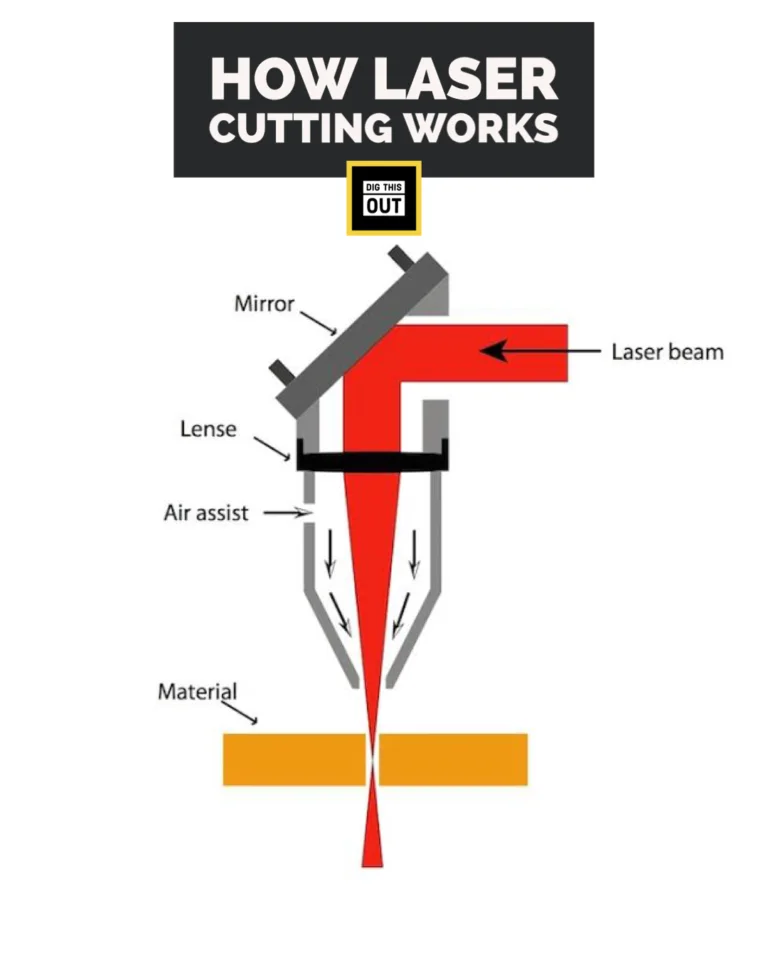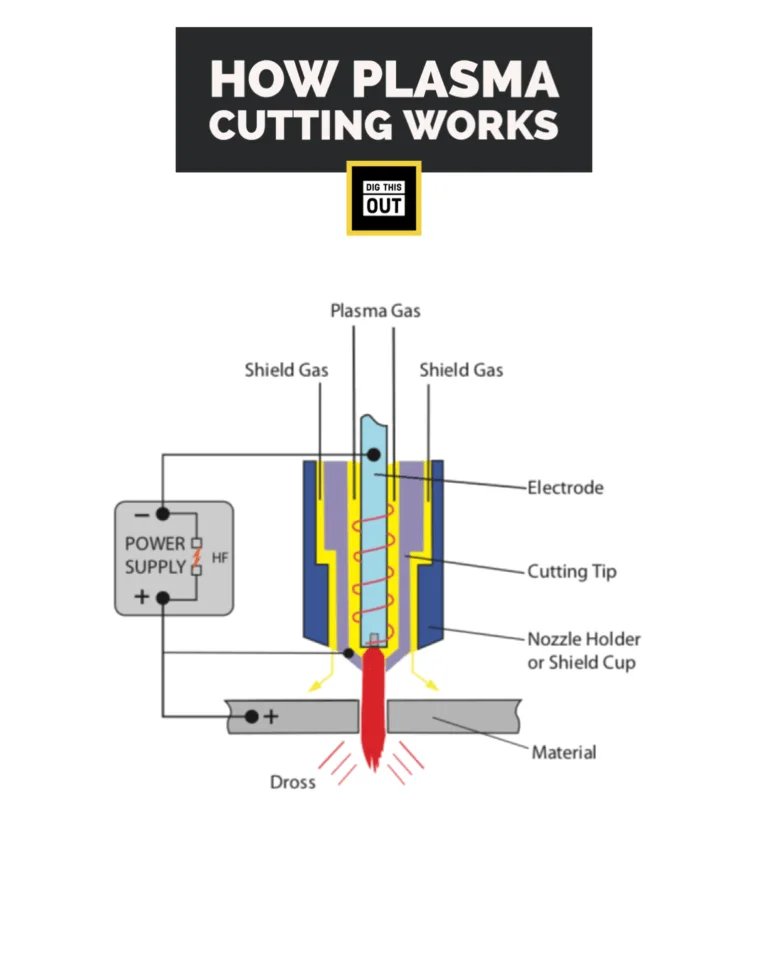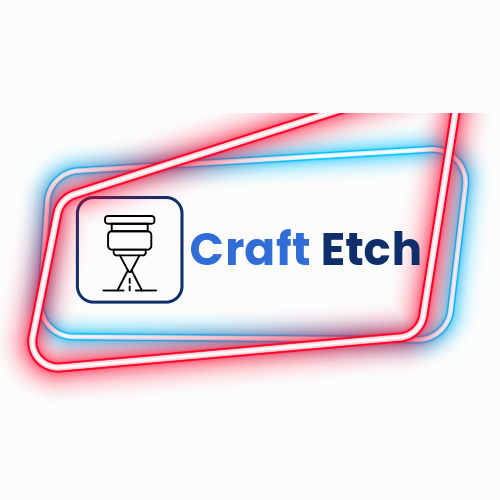Join Workshops
Physical Address
304 North Cardinal St.
Dorchester Center, MA 02124
Plasma Cutting vs Laser Cutting | 25 Technical Differences
If you want to know more about the differences between Plasma cutting & Laser cutting, this article is the right one. It covers the overall technical aspects of both laser cutting & plasma cutting.
What is Laser Cutting?
In laser cutting, a laser device generates a laser beam which further gets reflected several times by the different reflectors. The final laser beam then melts or vapourize the cutting objects as per the given design.

Normally, a laser beam has a diameter of 01. to 0.3 mm which makes contact with the material to place patterns. The power of the beam varies depending on the cutters and as well as the materials. The power of the laser beam varies from 1 to 3 KW which is enough to engrave materials such as wood, vinyl, and cardboard.
Advantages of Laser Cutting
- Laser cutters offer more precise cuts than the other cutting methods
- Laser cutters can extract exactly the same details as per the given drawing
- Maintaining a laser cutter is comparably easier than others
- The users can work maximum efficiency ratio while working with laser cutters
- Easy to set up. Some of them don’t even require any installation procedure
Disadvantages of Laser Cutter
- Cutting ability is limited to a certain thickness of metal
- Expensive to buy
- Leaves flame (such as toxic VOCs) which is dangerous to health
- Sometimes laser cutters cause edge burning on leather.
What is Plasma Cutting?
The plasma cutting machine was developed even before the invention of laser cutters. The need for plasma cutters came into the brain due to the inability to cut aluminum, stainless steel, and copper with flame.
In a nutshell, a plasma cutter cuts the heavy material with a plasma torch which comes from electrically conductive gas by a highly focused channel.

Advantages of Plasma Cutting
- Can cut heavier metals like copper, stainless steel, and aluminum
- Easy to use
- Cuts faster than flame
- Precision is better than flame cutting
- The initial cost is comparably lower
- Gas is not flammable
The disadvantages of Plasma Cutting
- You cannot engrave for a certain thickness with a plasma cutter
- Precision is not as sharp as laser cutters
- Versatility is so limited to certain materials
- Releases toxic fumes
Plasma Cutting vs Laser Cutting (Comparison)
Let us have a look at the head-to-head comparison between plasma cutting & laser cutting.
| Factors | Laser Cutting | Plasma Cutting |
| Working Principle | A high-power density laser beam is used to scan the material’s surface, quickly heat it to thousands to tens of thousands of degrees Celsius, melt or gasify it, and then blast the melted or gasified material away from the slit using high-pressure gas. | A processing method that uses oxygen or nitrogen as working gas uses high-temperature plasma arc heat to melt and evaporate the metal part incision and high-speed plasma flow to remove the molten metal to generate a slotting seam. |
| Cutting Process | Melting Process using concentrated laser light on the material surface. | Burning or melting process using high temp and pressurized ionized gas |
| Material Loss During Operation | High | Moderate |
| Multilayer Operation | No | No |
| Operation in Nonmetallic material surface | Yes | Moderate |
| Capable of Multi head operation | No | Very Limited |
| During operation creates hazardous vapor | Yes | Yes |
| Maximum operation limit in material thickness | 25mm (MS) | 150mm (SS, MS) |
| Machining Accuracy | 0.14mm | 0.4mm |
| Slit width | 0.2 ~ 0.3mm | Small |
| Slot Width | 0.6mm (for 16mm MS) | 0.5mm (for 16mm MS) |
| Deformation of Plate During Operation | Slight Deformation being observed most of the cases. | Small |
| Deformation Limit | ±0.15mm | 0.5~1mm |
| Operation Heat Affected Zone | 0.1-0.4mm | 0.5-2.0mm |
| Workpiece Damage during operation. | No | Slight damage may occur base on the operation performed. |
| High Precision Machining | Attainable | Unattainable |
| Operation Cutting Gap | The laser beam is focused into a small spot, the cutting gap is smaller | Bigger cutting gap |
| Cutting Speed (<10 mm) (>10 mm) | Faster, SLower | Slower Faster |
| Cutting Speed (14mm carbon steel) | 6m/min | 3.4m/min |
| Cutting Speed (30mm carbon steel) | 1.2m/min | 1.5m/min |
| Operatable materials | Metal: carbon steel, low alloy steel, stainless steel, high alloy steel, aluminum, copper alloy, Nonmetal: ceramics, plastics, rubber, wood, leather, cloth, paper, film etc. | High alloy steel such as carbon steel, low alloy steel and stainless steel. Other non-metallic high viscosity materials (rubber, film, etc.) *Brittle materials (ceramics, glass, etc.) cannot be operated. |
| Operated Section Quality | Excellent. No grinding required | Normal |
| Secondary Finishing Operation | Not required | Required |
| Flexibility of the Operation | CNC programming can be processed with any cutting. patterns no need any molds. Highly Flexible. | CNC programming causes the cutting and the precision is not enough. That’s why it cannot cut the smaller objects perfectly. Lacks in flexibility |
| Operating Cost | Low | High |
Differentiation Summary
Let us summarize the differences between plasma cutting & laser cutting. This will help in gathering a point of understanding for both of the cutting methods.
Flexibility
Laser cutting offers higher flexibility in terms of cutting, marking & engraving. On contrary, plasma cutters are only able to cut tougher metal materials. For instance, a budget laser cutter like Xtool D1 Pro can help you to cut wood, metal & other materials. Parallelly, a plasma cutter can only help you to cut metal.
Furthermore, laser cuttings are more accurate due to nature and it saves your time and money from post-processing. On the other hand, you will always need to spend a lot of time in the post-processing grinding jobs for the cuts done by the plasma cutters.
But, laser cutters get limited up to 25mm (MS) whereas plasma cutters can handle 150mm (SS, MS).
Ability
Plasma cutters offer better cutting speed for the thicker speed compared to laser cutters. For a 30mm carbon steel, a plasma cutter will operate at 1.5m/min speed whereas the laser cutters would do around 1.2m/min. However, the result gets changed if you select thinner materials. For instance, laser cutters’ efficiency would be 6m/min for 14mm carbon steel whereas the plasma cutter would do at 3.4m/min.
In terms of cutting the gap, the laser cutter stays one step ahead of plasma cutters because The laser beam is focused into a small spot so the cutting gap is smaller.
Material Compatibility
You can cut & engrave a variety of materials with a laser cutter. They handle carbon steel, low alloy steel, stainless steel, high alloy steel, aluminum, and copper alloy as well as non-metal items such as ceramics, plastics, rubber, wood, leather, cloth, paper, film, etc.
On contrary, plasma cutter’s material compatibility is always limited to High alloy steel such as carbon steel, low alloy steel, and stainless steel. Other non-metallic high-viscosity materials (rubber, film, etc.)
Cost Efficiency
This is a subjective point that takes attention to the users’ requirements. For example, if you are a professional welder then a plasma cutter is a must for you because of the ability to cut tough & thicker metal. On contrary, a laser cutter or a laser engraver always stays on the right side for the light engineers and crafters due to the variety of work they handle each day depending on the client’s requirements.
Let’s Summarize
Laser cutters use a high-powered laser beam to cut through metal. The laser beam is generated by a laser resonator and is then focused through a lens onto the material to be cut. The intense heat from the laser beam melts and vaporizes the metal, leaving a clean and precise cut. Laser cutters are known for their high accuracy, speed, and ability to cut through a variety of materials, including metal, plastic, and wood. They are commonly used for cutting intricate shapes, making it an ideal choice for applications such as jewelry making, signage, and art.
On the other hand, plasma cutters use a stream of ionized gas, also known as plasma, to cut through metal. The plasma is created by passing a gas, usually compressed air or nitrogen, through a narrow orifice and then applying an electric arc to the gas. The resulting plasma is extremely hot and can melt through metal quickly. Plasma cutters are known for their speed, thickness capacity, and affordability. They are commonly used for cutting through thicker materials and are popular in industries such as automotive repair, metal fabrication, and construction.
One key difference between the two machines is their precision. Laser cutters offer a higher level of accuracy and can cut more intricate shapes than plasma cutters. Plasma cutters, on the other hand, may produce rougher edges and a wider kerf or cut width, which may require additional finishing work.
Another difference is their power consumption. Laser cutters typically require more power than plasma cutters and may require additional cooling systems. Plasma cutters, on the other hand, are more energy-efficient and require less maintenance.
Finally, the cost of each machine can vary significantly. Laser cutters are generally more expensive than plasma cutters, making them less accessible for smaller businesses or individuals. However, laser cutters may offer a higher return on investment due to their precision and versatility.
In summary, both laser cutters and plasma cutters have their unique advantages and disadvantages. Laser cutters offer high accuracy and versatility, while plasma cutters offer speed and affordability. The choice between the two depends on the specific needs of the user and the nature of the project.



